
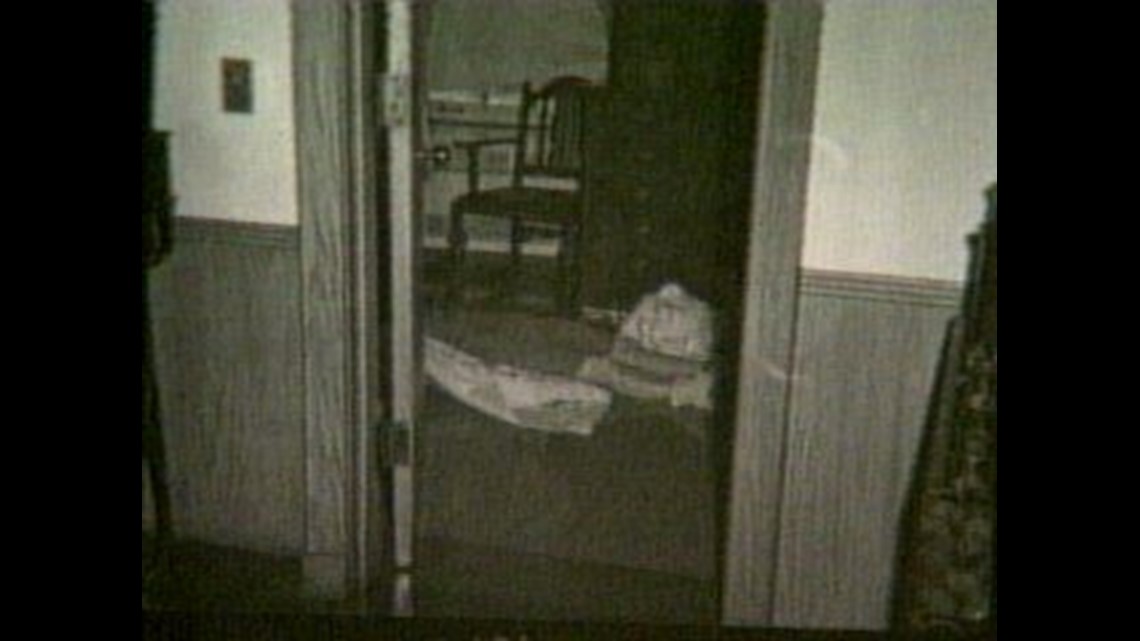

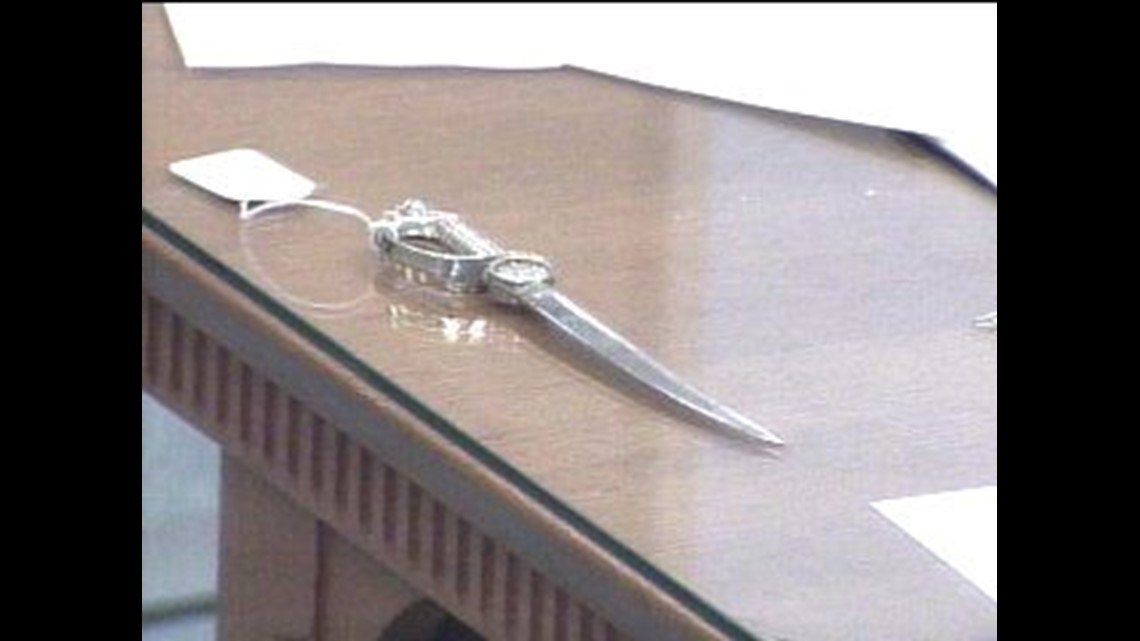

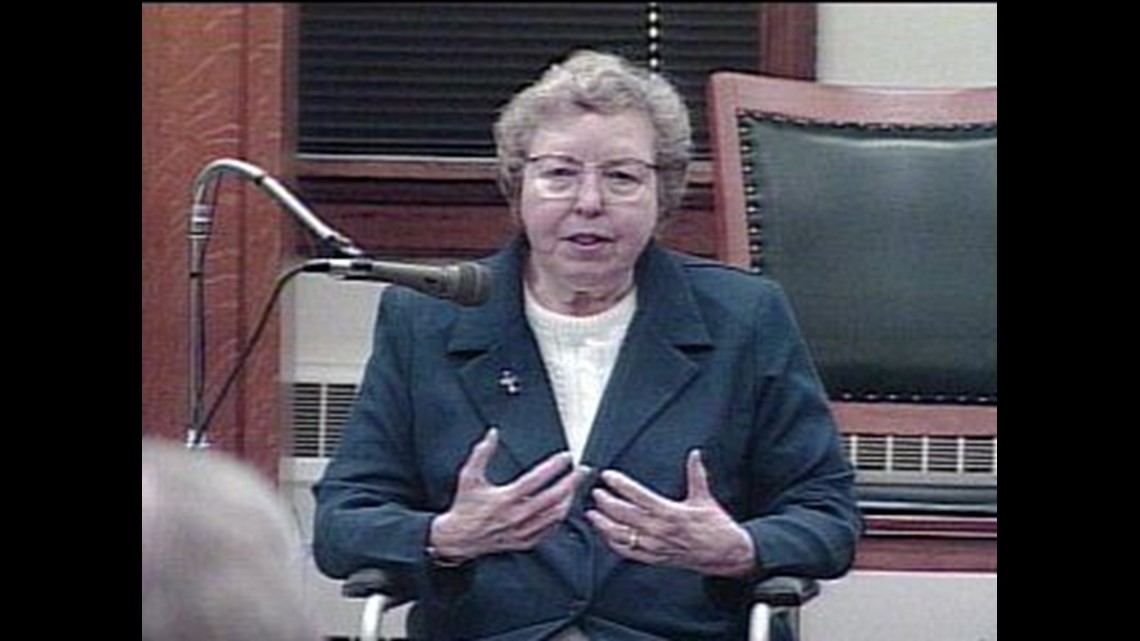

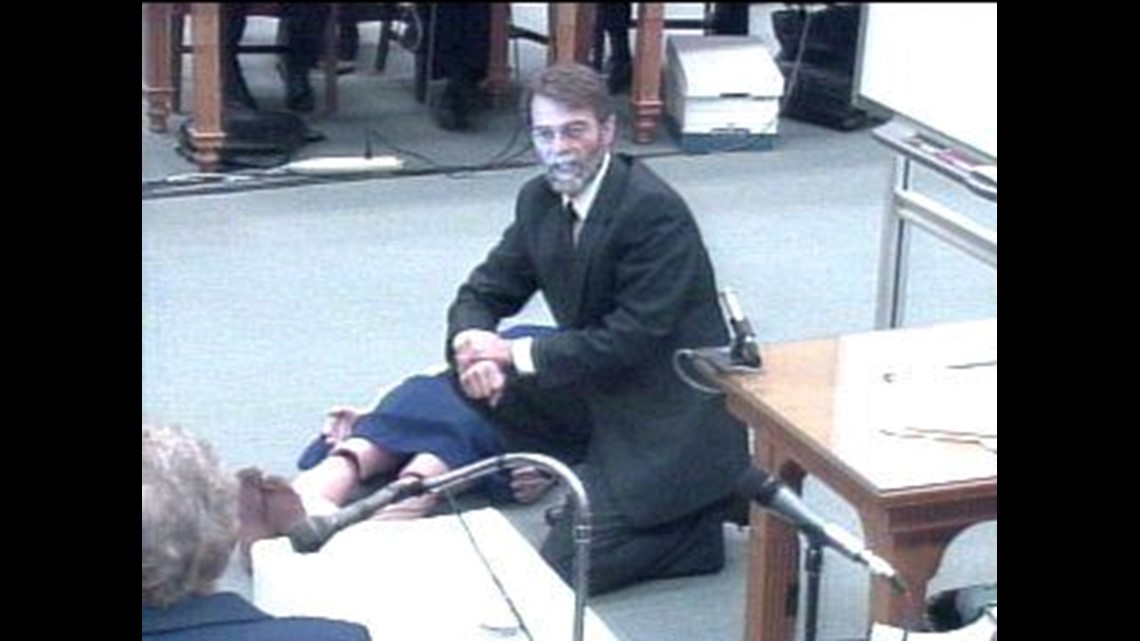

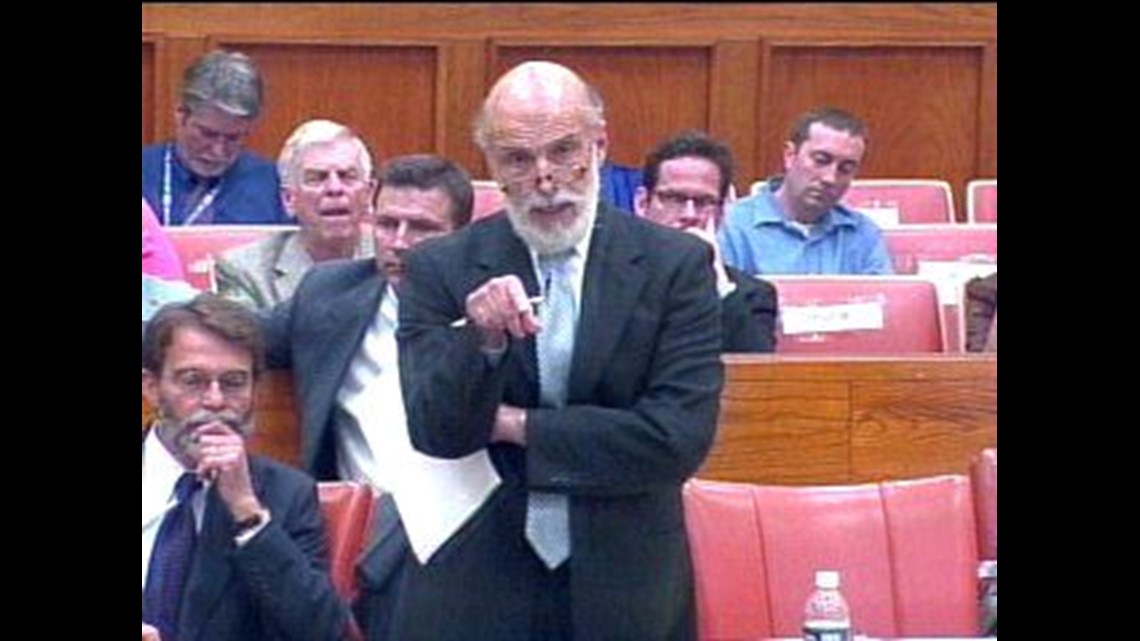
TOLEDO -- The first day's testimony in the Robinson trial began with two nuns recounting the horror of seeing Sister Margaret Ann Pahl's body in the sacristy of a hospital chapel on Holy Saturday in 1980. Then it was retired Toledo Police Lt. William Kina's turn to take the stand. He described two days that came later that month: one, when the priest was questioned -- and the second, when the alleged murder weapon was found.
Sister Phyllis Ann Gerold was the first to offer testimony in the case. She said she was eating breakfast in the hospital cafeteria when she heard screams coming from the chapel. She rushed there and found two or three other nuns inside. She also saw Sister Margaret Ann Pahl lying dead on the floor. She called the scene "ritualistic," and said she thought it was odd that Sister Margaret Ann's arms and legs were straight. She said it "wasn't a natural pose."
Another nun -- Sister Madelyn Marie Gordon, the chapel organist who first discovered Sister Margaret Ann's body -- also testified. Defense attorney Alan Konop asked her what she did after she found her friend dead. She told him, "I went to the middle of the chapel and sat down."
"That was a very tough moment, too," Konop said.
"Yes," the nun agreed. "I was kind of restless."
Prosecutors used a mannequin to illustrate the condition of Sister Margaret Ann's body. Both nuns testified that the nun's jumper was rolled up and her underwear was pulled down to the ankles.
There was something else the nuns agreed on: they said there was no blood visible when they first saw Sister Margaret Ann's body. But the crime scene photos clearly show a bloody scene. Alan Konop asked Sister Phyllis Ann if she saw the photos. She said she did.
"That would indicate that there was physical blood?" Konop asked.
"After many other people had been in the room, yes," the nun responded.
Prosecutor Dean Mandros asked Sister Phyllis Ann what her expectation would be about whether Father Gerald Robinson had a key to the sacristy in 1980. She said, "Well, he would not have access to the things he would need to complete any kind of sacrament -- and they were kept in the sacristy."
When Sister Madelyn Marie was asked how she is able to remember events that happened twenty-six years ago, the nun said, "Because it was very traumatic to me."
Following the nuns' testimony, Lt. William Kina -- a now-retired Toledo Police officer who put in 29 years on the job -- took the stand. He said that Father Robinson told him and now-retired Toledo Police detective Art Max that someone had come to him and confessed to the crime. According to Kina, the priest's revelation of the alleged confession emerged during a 16-hour interview on April 18, 1980, which was 13 days after the murder. Later in that same interview, the priest admitted that what he had told the officers about the confession was a lie.
Kina also testified that it would have taken someone "with a very strong vendetta" to kill another in that "ferocious" manner.
Konop asked, "There were suspects having to do with people who work there?"
"Yes."
"With people who work there?"
"Yes," Kina said again.
"People who were patients there with psychiatric problems that could have had strong vendettas or just been crazy, correct?" Konop asked.
"Correct," Kina said.
When Kina testified that Sister Margaret Ann Pahl was distraught over the fact "they" had shortened the Good Friday services the day before her death, Konop pounced on his words, asking if he knew who "they" were.
"They?" Konop said. "You said she was upset that 'they' had shortened the Friday services. You don't know who that person is, do you?"
"I've got an idea who they are," Kina responded.
"Do you know who specifically that person is?" Konop asked. "Did she ever tell you who that person was?" the defense attorney asked.
"No," Kina said.
"Never!" Konop said.
Kina told the court it was he and another officer who found the alleged murder weapon in Father Robinson's living quarters the day after the 16-hour interview. The weapon -- a dagger-shaped letter opener that police say belonged to the priest and was in his "sole control" on the morning of the murder -- was identified by Kina during his testimony Monday.
"Dr. Fazekas stated that what we should be looking for is a blade no wider than a half-inch, and it could be narrower but not wider, and at least three inches long." Kina testified.
Konop asked Kina, "Would it be fair, officer, to say that there is not a single report in this entire investigation that you have signed and prepared?"
Kina replied, "That's true."
"Not a single one?" Konop said.
"Right."
Kina also testified that on the morning of the murder, a receptionist and a maintenance worker reported hearing footsteps in a hallway that led to Father Robinson's living quarters. However, neither saw who it was.
Despite Sister Margaret Ann's underwear being pulled down to her ankles, and despite the fact that two items belonging to her were missing, Kina said police ruled out sexual assault and robbery. In addition to a missing wristwatch and gold cross that were Sister Margaret Ann's, scissors are also missing.
Tuesday Kina will be on the stand, then the court will hear from a former Toledo Police crime lab employee named Josh Franks, who examined evidence in 1980. Eventually, nationally-known forensic experts will be testifying.

